SMA Extension Cable Guide: Length, Signal Loss & Outdoor Setup
Oct 13,2025
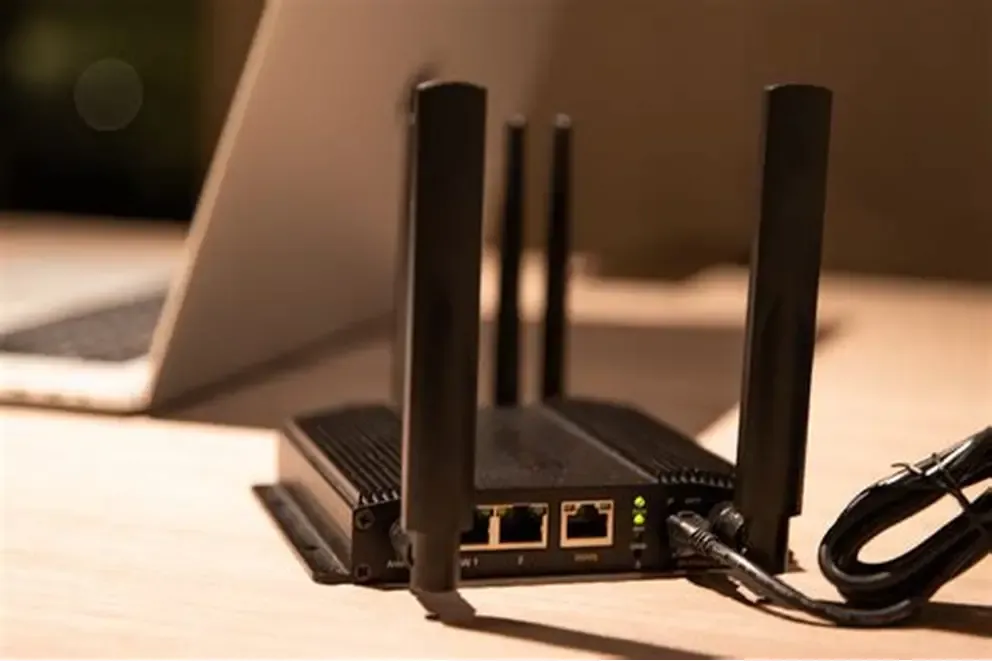
The image illustrates how different coax cables—RG316, RG58, and LMR series—impact signal quality in SMA extensions. It highlights that each extra meter adds measurable loss, especially above 2 GHz.
If you’ve ever set up a Wi-Fi antenna on a rooftop, wired a GPS receiver in a vehicle, or moved an IoT gateway out of a metal cabinet to improve signal, you’ve probably wrestled with the same issue—how far can you run the SMA extension cable before your signal starts to fade?
The choice looks deceptively simple—pick a length, screw it on—but RF engineers know the truth: every extra meter quietly eats away at your link budget, especially once you cross 2 GHz. It’s not just about length; the cable type, connector quality, and even mounting environment make a measurable difference.
From experience, the small brown RG316 jumpers behave nothing like the thicker RG58 or low-loss LMR-240 used outdoors. Flexibility, loss, and durability each tell a different story.
So this guide gets practical—it focuses on what truly matters: how much loss you can live with, which connectors fit your setup, and how to make sure the whole line stays reliable in real-world conditions.
Which cable (RG316, RG58 or LMR-200/240) fits your length and loss?
Not every 50 ohm coax cable behaves the same once it’s out in the field.
Each type carries its own trade-off between flexibility, attenuation, and ruggedness.
The RG316 cable is thin, light, and impressively flexible—perfect when space is tight or when the line must bend repeatedly, such as inside small enclosures or test rigs. It tolerates up to 150 °C and resists kinking, but that convenience comes at the cost of higher signal loss.
By contrast, the RG58 cable feels sturdier in the hand and costs less to produce. It works well for mid-length indoor links or low-power RF setups. Still, as frequency rises past 2 GHz, its attenuation increases sharply—you’ll notice weaker signal margins on 5 GHz Wi-Fi if the run gets too long.
When distance or outdoor reliability matters more than weight, it’s hard to beat LMR-200 or the heavier LMR240 cable. Both use foam-PE dielectric and double shielding, giving much lower loss and better resistance to weather and mechanical wear. These cables are popular in rooftop antennas, repeaters, and outdoor LTE stations where signal stability matters as much as sealing.
From hands-on experience, installers often compare RG316 cable with RG174. Both are flexible, but the silver-plated conductors and PTFE insulation of RG316 typically yield about 30 % lower attenuation and a far wider temperature range. That difference may not look dramatic on paper—but in practice, it’s what separates a steady RSSI from a fluctuating link.
If you’re connecting devices end-to-end, a short SMA to SMA cable using RG316 can still outperform a longer low-loss line that’s poorly routed or crushed under strain. Keeping bends gentle and connections clean often matters more than chasing the absolute lowest dB number.
Here’s a quick snapshot from TEJTE’s in-house test data under 25 °C and sea-level conditions:
| Cable Type | Attenuation @ 2.4 GHz | Attenuation @ 5 GHz | Impedance | Min Bend Radius | Temp Range | Notes |
|---|---|---|---|---|---|---|
| RG316 cable | 1.46 dB/m | 2.15 dB/m | 50 Ω | 15 mm | -55 ~ 150 °C | High-flex PTFE/FEP jacket; 2.5 mm OD |
| RG58 cable | 0.25 dB/m | 0.43 dB/m | 50 Ω ± 2 | 50 mm | -20 ~ 70 °C | Economical; single foil + braid |
| LMR-200 | 0.45 dB/m | 0.70 dB/m | 50 Ω | 25 mm | -20 ~ 80 °C | Foam-PE dielectric; tight braid |
| LMR240 cable | 0.32 dB/m | 0.46 dB/m | 50 Ω | 30 mm | -20 ~ 80 °C | Dual shielding; outdoor rated |
At 5 GHz, a 3 m RG316 cable loses about 6.5 dB, roughly a quarter of your transmit power, while the same length of LMR240 cable drops only 1.5 dB.
If you’ve ever debugged a weak link on a roof in the rain, that small difference suddenly feels big.
Pro tip: when in doubt, shorter and cleaner beats longer and cheaper. An honest 2 m 50 ohm coax cable with smooth bends can outperform a rough 5 m stretch of any “low-loss” line.
For a deeper look at structure and dielectric design, visit TEJTE’s RF Coaxial Cable Guide—it explains why shielding density and material choice often matter more than diameter alone.
How long can you run before loss breaks your link budget?
Every coax line adds invisible resistance. That invisible loss—the SMA cable loss—slowly eats into your signal budget.
No matter how good the radio or antenna is, physics always wins after a few extra meters of cable.
For 2.4 GHz Wi-Fi and LTE systems, try to keep total path loss under 6 dB, including connectors.
At 5 GHz, aim below 4 dB; at 6 GHz, stay closer to 3 dB if you want clean throughput.
| Frequency | Max Loss (dB) | RG316 Max Length | RG58 Max Length | LMR-200 Max Length | LMR240 Max Length |
|---|---|---|---|---|---|
| 2.4 GHz | ≤ 6 dB | ≈4 m | ≈24 m | ≈13 m | ≈19 m |
| 5 GHz | ≤ 4 dB | ≈2 m | ≈9 m | ≈6 m | ≈9 m |
| 6 GHz | ≤ 3 dB | ≈1.2 m | ≈6 m | ≈4 m | ≈6 m |
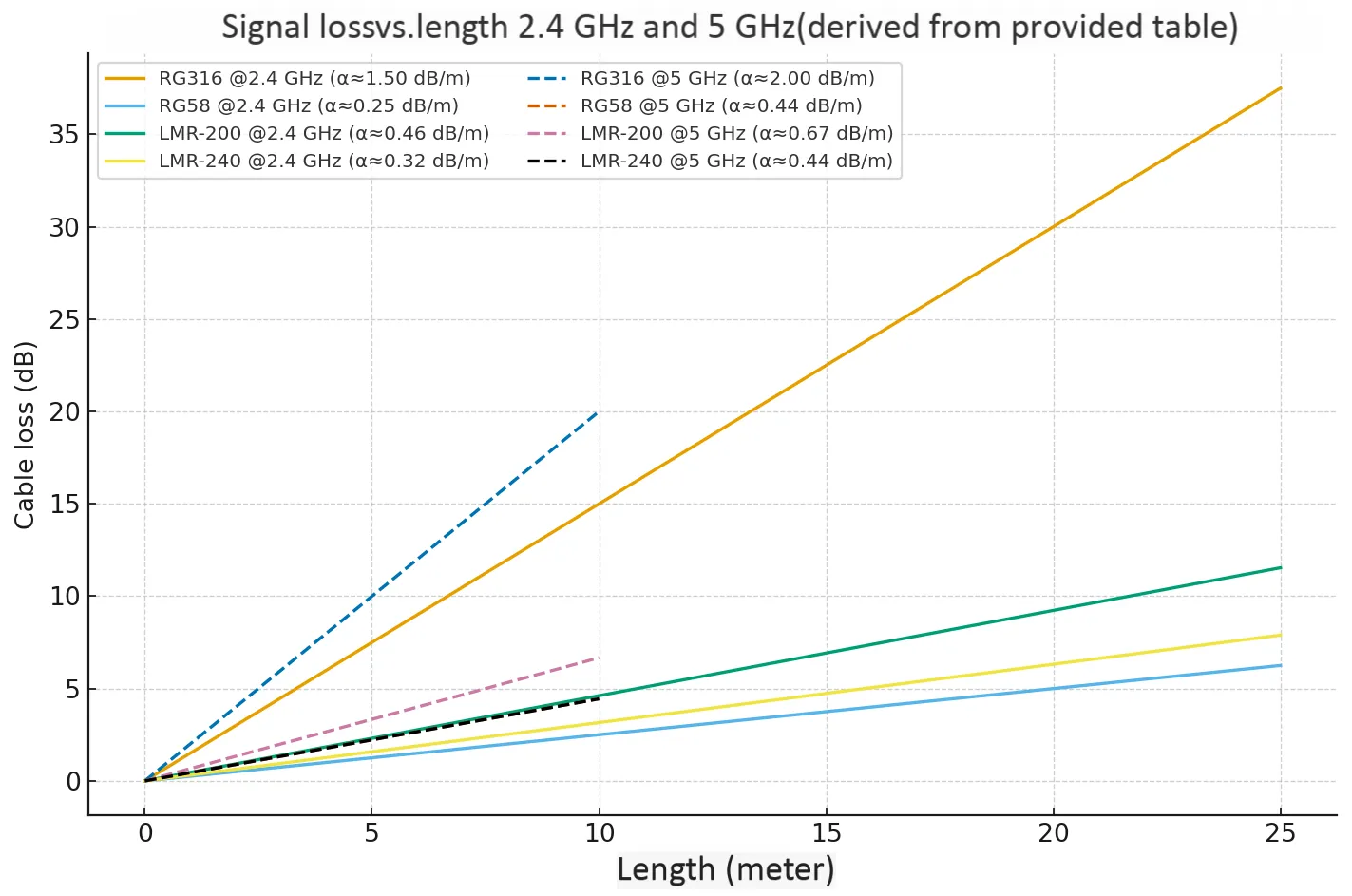
The chart compares measured attenuation between flexible RG316 and low-loss LMR240, showing how cable diameter and dielectric structure influence link stability at high frequencies.
When you reach those limits, performance doesn’t just fade—it falls off a cliff.
A 3 m RG316 cable might seem short, yet at 5 GHz it already drops around 6.5 dB. That’s nearly one-quarter of your transmit power gone before it even hits the antenna.
Meanwhile, the same run in LMR240 cable shows only 1.5 dB of attenuation.
The signal difference may look small on paper, but anyone who has tuned a weak link knows that 5 dB can be the gap between a stable stream and a connection that blinks out every few minutes.
Use this quick rule of thumb when planning your layout:
Loss_total (dB) = α × Length + Σ connector loss (≈ 0.2 dB each)
For example, a 3 m LMR-200 SMA extension at 5 GHz with two connectors:
Loss_total ≈ 0.70 × 3 + 0.4 = 2.5 dB — well within the 4 dB budget.
Do you need SMA or RP-SMA ends—and which male/female combo?
Connector polarity trips up even seasoned installers.
SMA and RP-SMA look nearly identical, but their center contacts differ.
Standard SMA uses a male pin with external threads, while RP-SMA (reverse polarity) swaps the pin gender.
If you mismatch them—say, RP-SMA antenna to SMA cable—the threads will engage, but no electrical contact forms.
Before ordering any SMA-to-SMA cable or RP-SMA extension cable, confirm both gender and polarity on each side:
- SMA-M to SMA-F – the classic pairing for modems, GPS, and LTE units.
- RP-SMA-M to RP-SMA-F – common on consumer Wi-Fi routers and APs.
- Mixed SMA/RP-SMA – mainly used for testing setups or polarity adapters.
| Port Type | Device / Application | Required Cable End |
|---|---|---|
| RP-SMA Female | Wi-Fi Router / AP | RP-SMA Male |
| SMA Female | LTE / 5G Modem | SMA Male |
| SMA Male | GPS Antenna | SMA Female |
| SMA Female | FPV Transmitter | SMA Male |
Quick visual check:
Threads on the inside with a center pin → RP-SMA Male.
Threads on the outside with a hollow center → SMA Female.
Mixing them up can silently block your entire RF path.
If you’re unsure, compare your parts to the diagrams in TEJTE’s RP-SMA Connector: Polarity, Gender & Antenna Fit guide before purchasing.
Will your route survive outdoor use—IP sealing, UV and strain relief?
A lab-clean cable can behave very differently once it meets sunlight, moisture, and wind.
Even a well-chosen SMA antenna extension cable can fail early if the connectors aren’t sealed properly or the coax sheath isn’t UV-rated.
Start with materials.
Cables such as RG316 with FEP jackets handle up to 150 °C and resist chemical exposure, but they’re thin and not ideal for rooftop or tower installations.
Heavier types like LMR-200 and LMR-240, both jacketed in black PVC with dual shielding, are better for outdoor SMA extension runs—they combine lower loss with better physical strength.
When routing through a wall or cabinet panel, use bulkhead connectors fitted with O-rings or silicone grommets.
TEJTE’s IP67 SMA bulkhead connectors integrate weather boots that stop condensation from creeping into the threads.
If you have to route vertically, leave a small drip loop below the antenna base so water doesn’t track along the cable into the device housing.
| Protection Element | Function | Typical Material | Notes |
|---|---|---|---|
| O-ring / Weather boot | Blocks moisture at connector interface | Silicone or EPDM | Replace after repeated mating cycles |
| UV-resistant jacket | Prevents sunlight cracking | PVC (black) or PE | Black absorbs less UV damage over years |
| Strain-relief clamp | Avoids mechanical stress on SMA port | Nylon / metal tie-down | Place near device or mast base |
| Drip loop | Stops rainwater ingress | - | Keep lower than entry port |
A few centimeters of service slack near each end can save an installation later—tight cables pull against the SMA connector threads during temperature swings.
If your setup involves frequent disconnects (for testing or modular antennas), consider pairing the extension with SMA dust caps and light dielectric grease to prevent oxidation.
For a more detailed look at outdoor mounting, TEJTE’s SMA Antenna Extension Cable: Outdoor/IP67 Guide shows real installation photos and sealing methods.
Should you use a short extension or relocate the antenna/base instead?
Sometimes, the best SMA jumper cable is no cable at all.
Adding length always adds loss, even with LMR-240.
If your radio module and antenna can both move, relocating one may outperform any long extension.
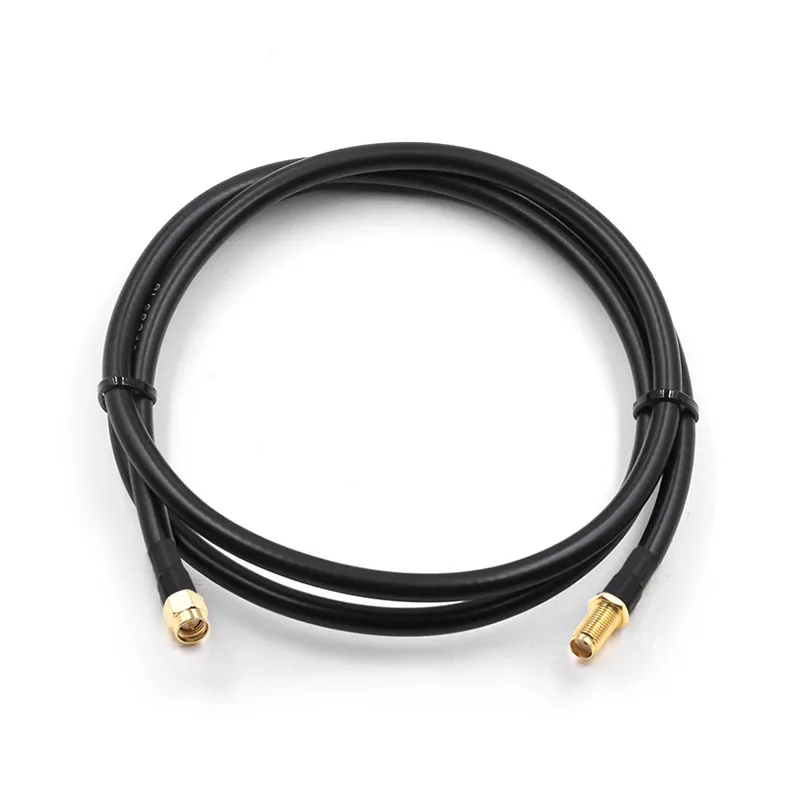
The image shows a TEJTE SMA male-to-female coaxial cable designed for extending RF signal paths between modules, routers, or antennas. It maintains low insertion loss and high shielding effectiveness up to 6 GHz.
Short “adapter-style” jumpers—typically SMA-M to SMA-F or RP-SMA-M to RP-SMA-F under 0.5 m—serve well for connecting between panel bulkheads or linking to a test port.
They introduce less than 1 dB loss even at 6 GHz.
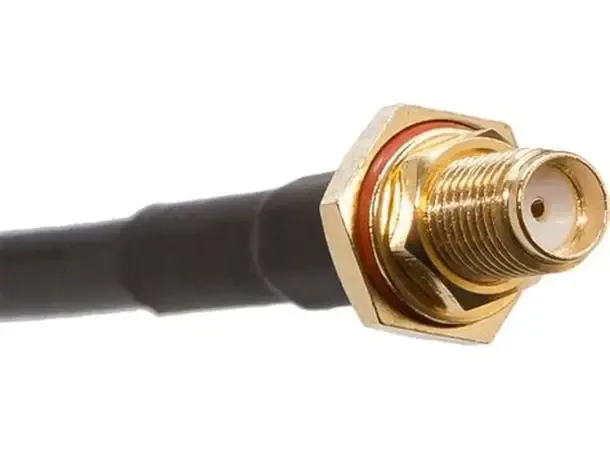
The product image shows a waterproof SMA connector with a silicone O-ring for IP67 sealing. It’s widely used in outdoor antennas, IoT terminals, and communication base stations to prevent moisture ingress and maintain signal stability.
| Scenario | Recommended Cable | Max Length | Comment |
|---|---|---|---|
| Bench / test adapter | RG316 jumper | 0.3-0.5 m | Highly flexible, easy to route |
| Router-to-antenna indoor | RG58 or LMR-200 | ≤3 m | Balance cost and low loss |
| Outdoor mast | LMR-240 | 5-10 m | UV-resistant, dual-shield |
| FPV or drone | RG316 | ≤1 m | Weight critical |
| MIMO array | Paired LMR-200 | Matched within 1 cm | Keeps phase aligned |
A useful rule: relocate the RF source before adding more coax.
Every 3 dB you save in cabling roughly doubles effective range.
If you must extend, keep the first segment short and use the low-loss type afterward.
Within TEJTE’s RF Cable category, you’ll find both short SMA patch jumpers and long outdoor-rated assemblies—mixing them lets you maintain modularity without unnecessary attenuation.
How do you install and test an SMA extension cable correctly?
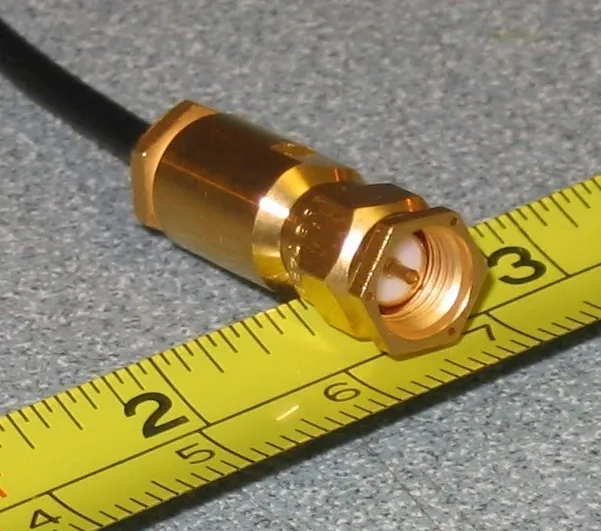
The image shows a 50-ohm coaxial cable terminated with SMA connectors, used for RF modules, analyzers, and wireless routers. It provides low reflection loss (VSWR ≤1.20) and strong mechanical flexibility.
Installation is where most signal issues start.
Even the best 50-ohm SMA extension cable can underperform if torque or handling is off.
Here’s a field-tested routine from TEJTE’s QA team.
Step 1 – Inspect and prep
Check connectors for debris or plating flakes.
Finger-tighten first, ensuring threads engage smoothly.
Never cross-thread brass onto stainless steel ports.
Step 2 – Torque and ESD safety
Use a torque wrench rated 0.45–0.56 N·m for SMA interfaces.
Too loose causes mismatch; too tight deforms the dielectric.
Ground yourself or use an ESD strap—static discharges can quietly damage sensitive front-ends.
Step 3 – Continuity and quick loss check
Before powering up, measure basic DC continuity and ensure there’s no short between inner and outer conductors.
A quick handheld analyzer or VNA can confirm VSWR < 1.3 and return loss better than 18 dB.
If readings spike, re-seat connectors or check crimps.
Step 4 – Routing and securing
Avoid sharp bends below each cable’s minimum bend radius:
15 mm for RG316, 25 mm for LMR-200, 30 mm for LMR-240.
Secure runs with soft clamps every 30–50 cm to prevent vibration wear.
Step 5 – Final verification
Power up and verify RSSI or SNR at the far end.
If the link budget looks off by more than 1 dB, retest connectors or consider shorter sections.
A well-terminated, properly torqued SMA-to-SMA cable should last over 500 mating cycles with minimal VSWR drift.
TEJTE covers installation care and inspection photos in its SMA Crimp Connector: Strip & Inspect Guide—worth a read before any production build.
Order in one pass: which SMA extension cable SKU matches your use case?
Selecting the right SMA to SMA cable doesn’t need to be a guessing game.
Once you know your frequency, distance, and environment, it’s simply a matter of balancing length against signal loss.
TEJTE engineers tested each 50 ohm coax cable type—RG58 cable, RG316 cable, and LMR240 cable—to build a quick, reliable guide that helps installers choose the right assembly the first time.
| Use Case | Ends | Cable Type | Frequency | Length (m) | Estimated Loss (dB) | Outdoor Rated | Suggested TEJTE P/N |
|---|---|---|---|---|---|---|---|
| Wi-Fi router / AP | RP-SMA M to RP-SMA F | RG58 cable | 2.4 GHz | 3 | 0.75 | Yes (Black PVC) | RP-SMA-JW/RG58-3 M |
| loT modem / LTE device | SMA M to SMA F | LMR-200 cable | 5 GHz | 2 | 1.4 | Yes (IP67 boot) | SMA-JW/LMR200-2 M |
| GPS antenna | SMA M to SMA F | RG316 cable | 1.5 GHz | 2 | 2.0 | No (indoor use) | SMA-JW/RG316-2 M |
| FPV drone / RC | SMA M to SMA F | RG316 cable | 5 GHz | 0.5 | 1.1 | No (light duty) | SMA-JW/RG316-0.5 M |
| Outdoor mast / base station | SMA M to SMA F | LMR240 cable | 5 GHz | 5 | 2.3 | Yes (UV PVC) | SMA-JW/LMR240-5 M |
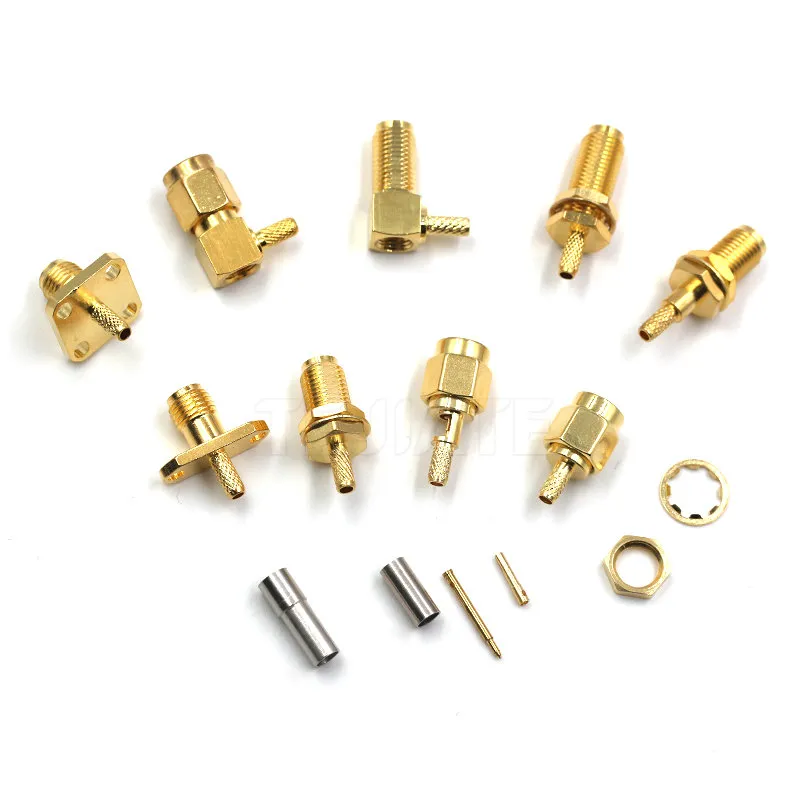
The image shows TEJTE’s SMA panel-mount product family, including 4-hole flange, threaded bulkhead, and waterproof variants. These connectors provide durable fixation, reliable sealing, and excellent RF consistency across assemblies.
Formula Reference:
Loss_total = α (f, cable) × Length + Σ Loss_connectors/adapters
(Each SMA pair adds roughly 0.3 dB)
In practice, this matrix works like a real-world decision sheet.
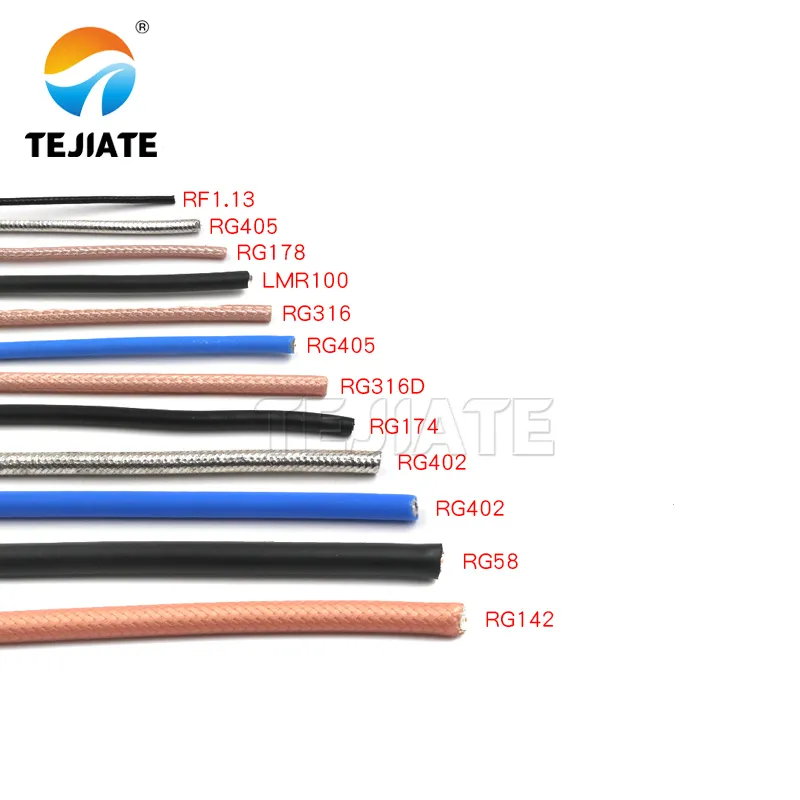
The image displays TEJTE’s full SMA cable lineup, including RG174, RG316, LMR200, and LMR240 assemblies. Each cable maintains 50Ω impedance and high shielding for reliable use in routers, CPEs, and industrial RF setups.
Compare your installation’s loss tolerance with available cable grades—RG316 cable for flexibility, RG58 cable for affordability, or LMR240 cable when you need the lowest attenuation possible in an outdoor run.
All of TEJTE’s assemblies maintain 50 ohm coax cable impedance and tight VSWR control, ensuring stable reflection performance even under high-frequency use.
Pro tip: When placing bulk or OEM orders, share your routing layout and connector requirements with the TEJTE support team via the RF Cable Customization Service.
They can recommend connector torque settings, boot materials, or optimal lengths—often saving rework time once cables are installed.
For designers working with hybrid setups, the Coaxial Cable to HDMI Adapter Guide explains how attenuation stacks across mixed signal paths, helping you plan complete RF-to-video systems efficiently.
Estimate loss instantly before you cut the cable?
Before running the first meter of coax, it’s smart to predict the RF cable loss.
You don’t need complex software—a simple attenuation calculator like the one below can save you hours of trial and error.
| Cable Type | α @ 2.4 GHz (dB/m) | α @ 5 GHz (dB/m) | Length (m) | Connectors (×0.2 dB) | Total Loss (dB) |
|---|---|---|---|---|---|
| RG316 | 1.46 | 2.15 | 2 | 0.4 | 3.1 |
| RG58 | 0.25 | 0.43 | 3 | 0.4 | 1.2 |
| LMR-200 | 0.45 | 0.70 | 5 | 0.4 | 3.9 |
| LMR-240 | 0.32 | 0.46 | 5 | 0.4 | 2.7 |
A quick example:
At 5 GHz, a 3 m LMR-240 cable shows about 1.8 dB total loss (0.46 × 3 + 0.4).
That’s barely noticeable for most SMA cable performance tests or Wi-Fi 6E backhaul links.
Even so, always add a 10% safety margin to account for small bends, heat rise, and connector imperfections.
Real-world attenuation tends to drift slightly once cables are compressed under clamps or routed near metallic surfaces.
The calculator above can be embedded in your design notes or spreadsheets; it’s a practical way to estimate total RF cable loss before making permanent cuts.
For those optimizing full link performance, check TEJTE’s SMA Attenuator Guide.
It explains how dB values compound along an RF chain and how to keep insertion loss within spec for long runs.
FAQ
1. How much signal loss should I expect from a 3 m RG316 SMA extension cable?
At 5 GHz, a 3 m RG316 cable typically introduces around 6.5 dB loss, based on TEJTE’s in-house attenuation tests.
That means roughly one-quarter of your transmit power never reaches the antenna.
If your setup is longer than 3 m, consider switching to LMR-200 or LMR-240 for lower loss while keeping the same SMA male-to-female connectors.
2. Will an RP-SMA extension cable degrade Wi-Fi performance more than an SMA one?
Not necessarily. The performance difference mainly comes from cable type and length, not polarity.
An RP-SMA extension cable simply changes connector gender for Wi-Fi devices; the loss per meter remains the same as a standard SMA cable.
Just double-check polarity—an RP-SMA plug won’t carry signal if it mismatches a standard SMA port.
3. What’s the longest SMA extension cable I should use before moving the radio or antenna?
For most 2.4 GHz links, try to stay below 6 dB total loss—around 4 m for RG316 or 13 m for LMR-200.
At 5 GHz, shorten it to 9 m or less with LMR-240.
If the route needs more distance, relocate the radio module closer to the antenna and run Ethernet or fiber instead.
4. Can I run an SMA extension cable outdoors?
Yes, but make sure the assembly is IP67-rated or sealed with weather boots and O-rings.
Cables like LMR-240 with black UV-resistant jackets perform best for long-term outdoor use.
Avoid leaving connectors exposed; moisture ingress is the most common cause of SMA connector failure in outdoor installations.
TEJTE’s SMA Antenna Extension Cable: Outdoor/IP67 Guide includes detailed sealing examples.
5. Should I use a short adapter jumper instead of a long extension cable?
If total loss exceeds 4–6 dB, shortening the coax usually gives better results than adding gain at the antenna.
A short SMA jumper cable—for example, a 0.5 m RG316—keeps phase alignment stable for dual-band or MIMO setups.
For tight cabinets or patch panels, this approach minimizes reflections and stress on the connectors.
6. How do I identify SMA vs RP-SMA before ordering?
Look at both the thread and the pin:
- SMA Male → external thread + solid center pin
- SMA Female → internal thread + hollow center
- RP-SMA Male → internal thread + solid pin
- RP-SMA Female → external thread + hollow center
A 10-second inspection saves hours of debugging.
If you’re unsure, refer to TEJTE’s RP-SMA Connector: Polarity, Gender & Antenna Fit for labeled photos.
7. What quick tests confirm a new SMA extension cable is good?
Run a quick continuity check and a VSWR test before installation.
A healthy 50-ohm coax cable should show no short between inner and outer conductors and VSWR < 1.3.
TEJTE’s SMA Crimp Connector Guide explains how to inspect and test assemblies safely.
Conclusion
A dependable RF system doesn’t come from luck; it’s built through small, deliberate choices.
Every connector, every centimeter of coax, and every seal contributes to overall RF system performance.
Choosing the right SMA extension cable means understanding how signal behaves—not just at 2.4 GHz, but up to 6 GHz where reflections and mismatch start to bite.
In most installations, SMA cable reliability depends less on price and more on craftsmanship.
A short, well-sealed LMR240 outdoor SMA installation can easily outperform a longer, unprotected RG58 run.
Likewise, in indoor setups, a flexible RG316 jumper with proper strain relief can survive hundreds of cycles without VSWR drift.
To keep things simple, remember a few ground truths from the field:
- Keep total loss below 6 dB at 2.4 GHz, under 4 dB at 5 GHz.
Anything beyond that and your radio starts fighting physics instead of interference.
- Maintain 50 Ω impedance from radio to antenna—mixing 75 Ω TV-type cables ruins your match.
- Respect the bend radius and torque rating for each cable; over-tightening or crushing dielectrics causes invisible degradation.
- Seal outdoor joints with proper boots, grommets, or self-fusing tape. A single water droplet can oxidize the inner pin and double insertion loss within months.
- Re-test VSWR and return loss after installation. A 1 dB change might not look huge, but it can cut your coverage by 15–20%.
TEJTE’s engineering team maintains a full range of 50 ohm SMA cables, adapters, and weatherproof accessories.
For a broader understanding of system-level performance, visit the RF Coaxial Cable Guide and U.FL to SMA Pigtail Installation Guide.
They explain how each component—connector, adapter, or pigtail—fits into the full RF system performance chain.
If you need custom assemblies or matched-length pairs for MIMO or phase-critical systems, explore TEJTE’s RF Cable Customization Service.
Bonfon Office Building, Longgang District, Shenzhen City, Guangdong Province, China

A China-based OEM/ODM RF communications supplier
Table of Contents
Owning your OEM/ODM/Private Label for Electronic Devices andComponents is now easier than ever.
